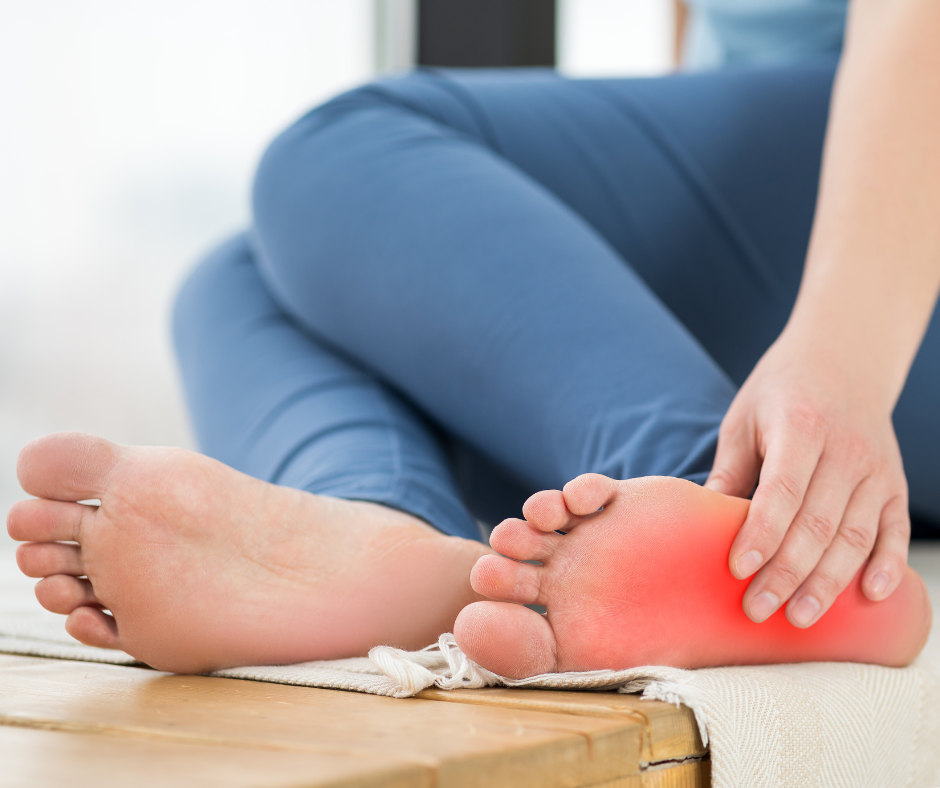A Podiatrist’s Guide to Plantar Fasciitis


You can’t fix a problem if you don’t even know what it is! That’s often the issue with plantar fasciitis, a common form of chronic heel pain that could affect up to 10% of the population! This time around, Kentlands Foot & Ankle Center will be explaining what defines the condition and which non-invasive treatment options you can trust.
Q: What exactly is plantar fasciitis?
A: Plantar fasciitis is the inflammation of the plantar fascia, a thick band of tissue running along the bottom of your foot, connecting your heel bone to your toes. Think of it as your foot’s built-in shock absorber. When it’s overstressed, it becomes painful.
Q: What does it feel like?
A: The hallmark symptom is stabbing heel pain, especially in the morning or after rest. It often feels better as you move around, then worsens again after activity. Some describe it as a deep ache or burning sensation along the arch.
Q: What causes it?
A: Several factors can contribute:
- Foot Mechanics: Flat feet, high arches, or abnormal walking patterns put extra strain on the plantar fascia.
- Overuse: Runners, walkers, and those who stand for long periods are at higher risk.
- Improper Footwear: Lack of arch support and cushioning.
- Tight Calf Muscles: Limit ankle flexibility, increasing stress on the fascia.
- Obesity: Excess weight adds pressure.
Q: How is it diagnosed?
A: A podiatrist can usually diagnose plantar fasciitis with a physical exam and review of your symptoms. X-rays may be needed to rule out other issues like stress fractures.
Q: How can I fix this without surgery?
A: Good news! About 95% of plantar fasciitis cases improve with non-surgical methods. Here are some key approaches:
- Rest: Reduce activities that aggravate the pain.
- Ice: Apply ice packs or roll a frozen water bottle under your foot for 15-20 minutes, 3-4 times a day.
- Stretching: Gentle stretches for your plantar fascia, Achilles tendon, and calf muscles are crucial.
- Supportive Shoes and Orthotics: Proper arch support and cushioning can redistribute pressure. Custom orthotics are often beneficial.
- Night Splints: These keep your foot flexed while you sleep, stretching the plantar fascia.
- Medications: Over-the-counter pain relievers (NSAIDs) can help with inflammation.
- Physical Therapy: A physical therapist can guide you through stretches, strengthening exercises, and other treatments.
Keep an eye out for future posts and more detailed information on treatments! We’ll explore options like ESWT, which involves using sound waves to stimulate healing in the plantar fascia.
Interested in learning more? We’re always happy to help! Schedule a comprehensive foot examination with Kentlands Foot and Ankle Center podiatrist Dr. Jon M. Sherman. To make your appointment, please call our office at 301-825-9697.
RECENT POSTS
categories
- Uncategorized
- Featured Articles
- Foot Disorders
- Broken Ankle
- Broken Toe
- Fracture
- Foot Health
- Foot Care
- Arthritis
- Foot Pain
- Skin Cancer
- Podiatry Appointment
- Custom Orthotics
- Podiatrist
- Diabetes
- Gout
- Heart Health
- National Nutrition Month
- National Foot Health Awareness Month
- Foot Safety
- Foot and Ankle Injuries
- Falls Prevention
- Chronic Heel Pain
- Shoes
- Laser Therapy
- Quoted
- Physical Therapy
- KeryFlex
- Sweat
- Summer Foot Care
- Sports Injury
- ESWT
- Fungal Toenails
- Bunion
- Plantar Fasciitis
- PinPointe Laser
- Heel Pain


